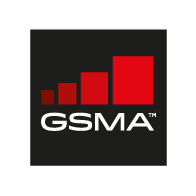IoT Ecosystem Report
Since the March 2018 report on the IoT Ecosystem & Evolution to Narrow Band Internet of Things (IoT), the continued mobile industry commitment to the range of 3GPP-standards-based Low Power Wide Area (LPWA) technologies has been characterised by the dramatic growth in the number of networks supporting NB-IoT and LTE-MTC (LTE-M) networks, and the substantial growth in the number of IoT modules for Cat-NB1 and Cat-M1 products, as well as more recently, the release of chipsets and modules compliant with Rel-14 Cat-NB2. There are:
- 124 deployed/ launched NB-IoT or LTE-M networks, run by 104 operators
- 141 operators actively investing in NB-IoT technology, up from 116 a year ago, of which:
- 90 have deployed/commercially launched NB-IoT networks, up from 59 in twelve months
- 30 are planning and/or deploying NB-IoT networks
- 21 are trialling NB-IoT technology.
- 60 operators actively investing in LTE-M technology, up from 47, of which:
- 34 have deployed/commercially launched LTE-M networks, up from 19
- 14 are planning and/or deploying LTE-M networks
- 12 are trialling LTE-M technology.
Note that a technology is regarded as deployed when it has been installed in the operator’s commercial network, and it is intended to remain in use (a trial or pilot installation might be discontinued). A network is considered to be commercially launched once it is available at least on a limited basis for the use of commercial customers.
In terms of IoT Ecosystem equipment, GSA has identified:
- 210 devices supporting either Cat-NB1 or NB-IoT; more than double the number in the GAMBoD database at the end of March 2018. Of these:
- 142 devices support Cat-NB1 (including known variants); 76 of them support Cat-NB1 only
- 134 devices support Cat-M1 (including known variants); 68 of them support Cat-M1 only.
- 74.3% are modules, 18.1% are asset trackers, and 5.2% are routers, with USB modems, vehicle on-board units (OBUs) and smart watches making up the balance.
- 29 commercially available chipsets supporting either NB-IoT or Cat-M1.
The 3GPP IoT technologies NB-IoT and LTE-M are set to become the global dominant LPWA technologies that will enable huge IoT market growth.
©2019 GSA
Content can be used providing GSA is referenced as the source.

